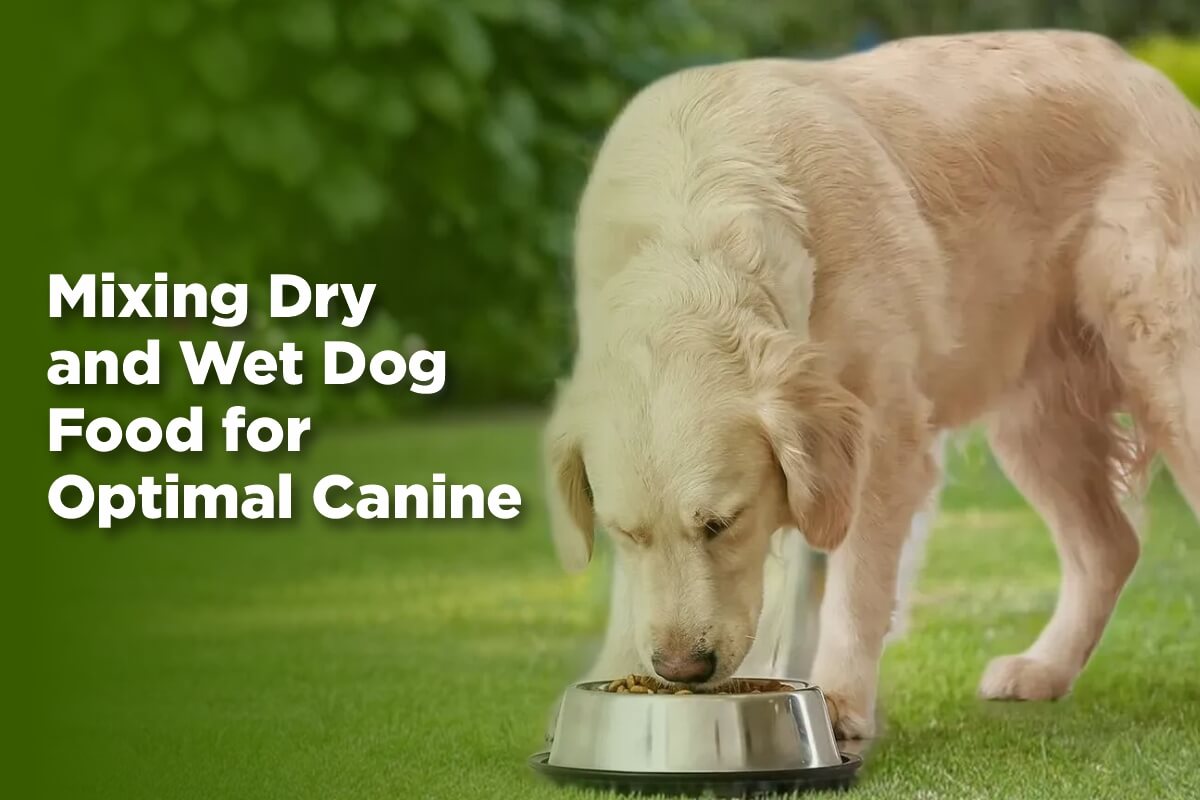Introduction
Ensuring our furry friends receive the best nutrition is a top priority for pet owners. One of the debates that often arises in the realm of canine nutrition is whether to feed dry kibble, wet canned food, or a combination of both. This blog aims to shed light on the benefits of adopting a balanced approach by mixing dry and wet dog food, providing both convenience for pet owners and optimal nutrition for our beloved canine companions.
Understanding the Canine Diet
Dogs, like humans, require a well-balanced diet to thrive. A complete and balanced dog food should provide essential nutrients such as proteins, carbohydrates, fats, vitamins, and minerals in the right proportions. Each nutrient plays a crucial role in maintaining a dog’s overall health, from a shiny coat to strong bones and a robust immune system.
Benefits of Dry Dog Food
Dry dog food commonly known as kibble, has long been a staple in the canine diet. Its popularity can be attributed to several advantages:
1. Convenience: Dry dog food is convenient for pet owners due to its longer shelf life and ease of storage. It doesn’t require refrigeration and can be left out for the dog to graze throughout the day.
2. Dental Health: Chewing on dry kibble helps promote dental health by reducing plaque and tartar buildup. The abrasive texture of the kibble can contribute to healthier teeth and gums, addressing a common concern among pet owners.
3. Affordability: In general, dry dog food tends to be more budget-friendly than wet dog food, making it an economical choice for many pet owners without compromising on nutrition.
Benefits of Wet Dog Food
While dry dog food has its advantages,dog wet food, often canned, also offers unique benefits:
1. Hydration: One of the main advantages of wet dog food is its high moisture content. This can be especially beneficial for dogs who may not drink enough water, contributing to their overall hydration.
2. Palatability: Wet dog food is known for its rich aroma and flavour, making it highly palatable for picky eaters or dogs with dental issues that may find chewing dry kibble challenging.
3. Nutrient Density: Wet dog food is often more nutrient-dense, providing a concentrated source of essential nutrients in a smaller serving size. This can be advantageous for smaller breeds or dogs with specific dietary needs.
The Balanced Approach
Combining both dry and wet dog food in your pet’s diet can offer a balanced approach that maximizes the benefits of each. Here’s why this approach may be the ideal choice for your furry friend:
1. Nutritional Variety: Just as humans benefit from a diverse diet, dogs can gain nutritional advantages from a variety of food textures and formulations. Mixing dry and wet food ensures that your dog receives a broader range of nutrients.
2. Hydration Support: By incorporating wet dog food, you provide an extra source of moisture that can contribute to your dog’s overall hydration. This is particularly valuable for dogs who may be prone to urinary tract issues or those living in hot climates.
3. Tailored Nutrient Intake: Depending on your dog’s age, breed, size, and health condition, their nutritional requirements may vary. A combination of dry and wet food allows you to tailor their diet to meet specific needs, ensuring they get the right balance of nutrients.
4. Enhanced Palatability: Mixing wet and dry food can make meals more appealing for dogs with discerning tastes. The enticing aroma of wet food may encourage picky eaters to consume their entire meal, promoting consistent and adequate nutrition.
Tips for Implementing a Balanced Diet
When transitioning to a mixed diet of dry and wet dog food, it’s essential to do so gradually. Sudden changes can lead to digestive upset, causing discomfort for your pet. Follow these tips for a smooth transition:
1. Gradual Introductions: Start by mixing a small amount of wet food with your dog’s dry kibble. Gradually increase the proportion of wet food while decreasing the amount of dry food over a week or two.
2. Monitor Weight: Pay attention to your dog’s weight and adjust the portion sizes accordingly. The caloric density of wet and dry food can vary, so keeping an eye on your dog’s weight helps prevent overfeeding or underfeeding.
3. Consult Your Veterinarian: Before making significant changes to your dog’s diet, consult with your veterinarian. They can provide personalized advice based on your dog’s health, age, and specific dietary needs.
Conclusion
In conclusion, adopting a balanced approach by mixing dry and wet dog food offers a myriad of benefits for both pet owners and their canine companions. From convenience and dental health to hydration and enhanced palatability, this approach addresses various aspects of a dog’s well-being. As responsible pet owners, our goal is to provide the best possible nutrition for our furry friends, and a thoughtfully balanced diet is a key component in achieving that objective.

